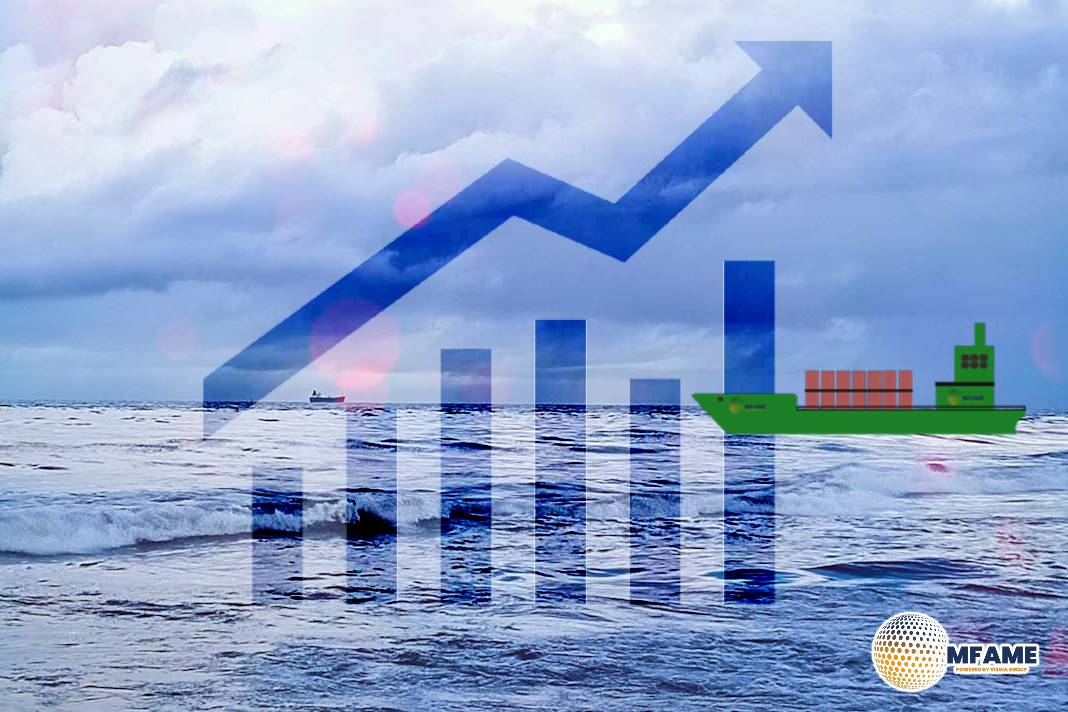In response to the escalating Red Sea crisis, Container xChange, an online container logistics platform, has released a comprehensive report detailing the far-reaching effects on container trading and leasing rates worldwide.
Multiple Factors
The report explores the intricate dynamics of the crisis, shedding light on the unprecedented surge in container prices and leasing rates, as well as the ripple effect on global trade routes.
Impact of Red Sea Attacks on Container Prices
As container vessels take longer routes, capacity constraints contribute to a revival in container rates. The China to-Europe trade lane has witnessed significant surges, with trading spot rates soaring in key Chinese ports. The disruptions are not confined to China; leasing rates bound for Hamburg, Germany have doubled since 1 January 2024.
To provide context on the current state of average container prices in Shanghai, China, in comparison to the peak demand period during the COVID-19 pandemic (2021), we present a chart illustrating the price trends from 2020 to 29 January 2024.
The container prices skyrocketed to historic levels in 2021 due to the pent-up demand post-COVID, reaching a peak of US$6171 in the last week of September 2021, and falling since then until December 2023 (keeping aside minor seasonal hikes). However, container prices have experienced a significant increase since the beginning of January 2024.
Container Leasing Rates continue to rise
Container leasing spot rates have mirrored the spikes observed in trading prices, especially in the China to Europe route. Rates have steadily increased, reaching notable highs. The expected continuation of disruptions indicates a prolonged period of challenges, requiring industries to adapt to structural imbalances in supply and demand.
“We’ve witnessed a continuous surge in leasing rates since around August-September 2023, starting at a low of approximately US$200 for a one-way move from Ningbo or Shanghai to Hamburg, often referred to as pickup charges. This escalation is primarily driven by two key factors. Firstly, the widening price gap in trading prices has played a pivotal role, and secondly, there’s a notable equipment scarcity across China. As the price gap widens and equipment availability tightens, the spike has become more evident since the beginning of 2024. It’s clear that the attacks in the Red Sea are not merely a passing phenomenon; they have substantial implications on the routing of container vessels, causing delays in their return trips to China. We have witnessed this surge to the top at US$800 for a one-way move, marking a fourfold increase,” stated Christian Roeloffs, co-founder, and CEO of Container xChange.
Industries Impacted by Red Sea Turmoil
The longer disruptions at the Red Sea trade route pose a significant threat to various
industries, including automobiles, electronics, chemicals, consumer goods, machinery, and pharmaceuticals. Delays in the supply chain could lead to production interruptions, impacting global value chains.
“Effectively navigating this critical period requires enhanced predictive analysis,
meticulous demand forecasting, and increased collaboration within the industry. By
employing advanced planning techniques and maintaining agility in response to
evolving situations, the manufacturing sector can not only overcome immediate
challenges but also strategically position itself for long-term success. Adapting to
the new normal will involve holding increased inventory, accounting for extended
transit times, and acknowledging higher container rates as integral components of
the evolving landscape,” explained Christian Roeloffs, co-founder, and CEO of
Container xChange.
Did you subscribe to our daily Newsletter?
It’s Free! Click here to Subscribe
Source: Container News
















